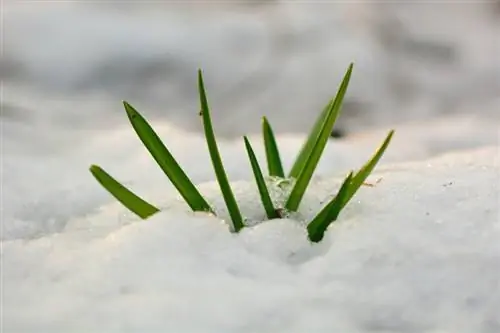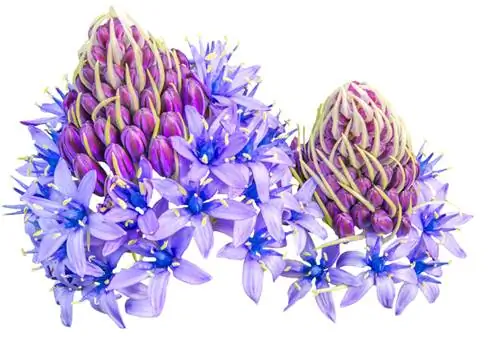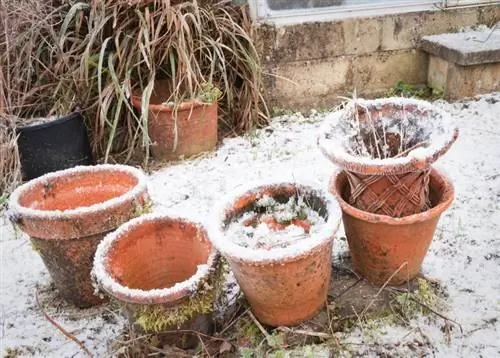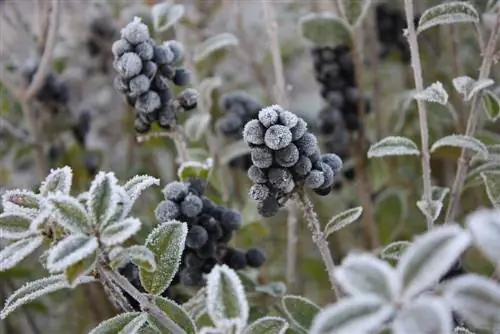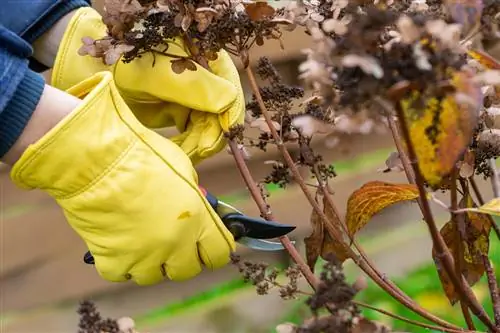- Author admin [email protected].
- Public 2023-12-16 16:46.
- Last modified 2025-01-23 11:20.
Stunning, extravagant and unfortunately short-lived - when this type of szilla is in full bloom it decorates the home. It's better not to plant them out. Why this is related to their winter hardiness and more about their frost tolerance is explained below
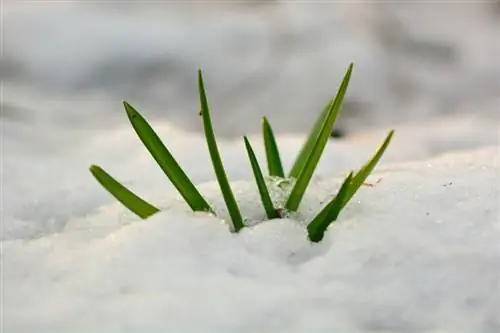
Is the Peruvian squill hardy?
The Peruvian squill is not hardy because it originally comes from the Mediterranean region and cannot tolerate severe frost. Cultivated indoors, it should be in a frost-free, bright place at 10-20 °C.
A Mediterranean, not winter-hardy plant
The Peruvian squill originally comes from the Mediterranean region. It occurs from southwest Europe to northwest Africa. This circumstance means that it cannot tolerate severe frost. It is therefore not considered winter hardy in this country. For this reason it is usually cultivated in pots at home.
The Peruvian squill can only tolerate short-term frost and temperatures that do not fall below -5 °C. But even that is not 100% certain. Therefore, you should not put him to the test.
Winter time is flowering time
In its homeland, Scilla peruviana blooms in the wild between May and June. In this country, this plant is usually kept in pots at home. There it is encouraged to bloom in the winter in the fall.
The flowers are gathered together in a racemose inflorescence that is vaguely reminiscent of the artichoke. Here, 40 to 100 individual flowers adorn the large inflorescence. They are hermaphrodite and tripartite. Their color can be between blue-purple or white - depending on the variety.
How to get this plant through the winter?
You should put away plants in the winter. Otherwise they will freeze to death. Plants that are already in pots in the living room, kitchen or elsewhere do not necessarily need to be relocated in winter.
The main thing is that they are in a frost-free and bright place. The temperatures should be between 10 and 20 °C. Be careful not to expose the plant to direct sunlight!
Care during the winter period
During the winter, the Peruvian squill needs a little care:
- water regularly
- supply with liquid fertilizer (€8.00 on Amazon) every 2 weeks
- ventilate the room well (to avoid dry room air)
- check for pest infestation
- remove wilted leaves
- cut off the inflorescence after the flowering period
Tip
Caution: No matter how beautiful the Peruvian squill is, it is poisonous! Place it where small children and pets cannot access.

